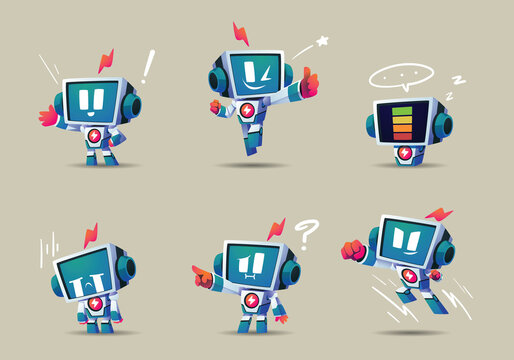Have you ever wanted to be able to have a conversation with an AI? It’s possible, and it can be both informative and enjoyable. But how do you create an intelligent conversation with an AI? In this blog post, we’ll explore the different ways to initiate and maintain conversations with AI, as well as some tips for making them more engaging. So if you’re interested in learning how to spark an intelligent dialogue with an AI, read on!

Introduction to AI and Writing
In this section, we will explore how AI and writing can work together to help you create intelligent conversations. We will look at how NLP can be used to understand the written word, and we will discuss some of the available AI-powered writing tools. Finally, we will show you how to use chatbots for natural interactions with your audience.
Write the content for section 2:
In this section, we will explore how NLP can be used to understand natural language in written text. We’ll look at examples of common phrases and statements and see how NLP can identify the structure of these texts. Then, we’ll move on to discussing different types of Machine Learning algorithms that can be used for analysis purposes.
Write the content for section 3:
In this section, we will discuss some of the benefits that come with using AI to automate certain writing tasks. First, we’ll examine why it is important to have a clear goal when automating any task – if our goal is simply reduce typing or error rates then an AI tool may not provide much value over human interaction. Second, we’ll look at ways in which AI can help us write more effectively by identifying potential errors and suggesting revisions before they are even made! Third, we’ll explore how machine learning algorithms can be used to generate content automatically – from creating article outlines to generating new blog posts on demand! Fourth, finally – let’s talk about chatbots! Chatbots offer a natural way for customers and clients interact with businesses; through conversational interfaces bots enable businesses to better understand customer needs and feedback
Understanding Natural Language Processing (NLP)
One of the recent applications for AI that is impacting writing is natural language processing (NLP). NLP can help you automate tasks like proofreading and correcting grammar, verifying spelling and accuracy, and locating potential sources of information. Some platforms that offer NLP capabilities for writers include Quickoffice 365, Microsoft Word’s “Track Changes” feature, Google Docs “Undo/Redo” features, and Apple Pages “Text Replacement.” Each platform offers its own set of tools and settings to use in order to get the best results.
Another application for AI in writing is machine learning. This technology allows computers to learn from data without being explicitly programmed. As your team creates more documents using this type of AI-assisted writing assistance, you can start seeing improvements in terms of speed and accuracy – especially when it comes to repetitive tasks like copyediting or fact-checking. Machine learning algorithms are constantly evolving as they are trained on new data sets, so you will continue to see improvement over time as well. In addition to improving writing productivity, machine learning also has the potential to enhance our understanding of text by detecting patterns or trends that humans might not be able to detect on their own.
Finally, chatbots are another form of AI that has been gaining traction in the world of human resources (HR) administration and customer serviceawiing . Chatbots can provide a one-stop shop for answering common questions about company policies or offering support for specific products or services. By automating simple conversations with customers via bots instead of phone lines or email threads, companies can reduce costs while still providing excellent customer service..

Using AI to Automate Writing Tasks
When it comes to automating writing tasks, there are a variety of AI-powered tools available that can help improve your work flow. One such tool is artificial intelligence software that can read and understand natural language. This type of software can help you identify the specific elements of a sentence, track usage within a document, and suggest corrections. Additionally, machine learning algorithms can be used to learn from text and make better suggestions in the future.
Another popular technique for automating writing tasks issentiment analysis. This involves identifying the sentimentality (positive or negative) of a piece of text by analyzing its grammar, syntax, punctuation, word choice and other factors. This information can then be used to generate drafts or articles automatically based on certain parameters set by the user.
Beyond simply automating mundane writing tasks, AI has also been shown to be helpful in generating content for various purposes: creating summaries for reports or presentations; providing background information for essays; composing blog posts; outlining proposals; and more. In some cases, AI technology may even outperform human writers in terms of quality and accuracy. All things considered – whether you’re looking to speed up your process or produce higher quality work – there are likely several AI-enabled tools out there that could benefit your efforts.

Generating Content with AI-Powered Writing Tools
Artificial Intelligence for Autonomous Writing
Artificial Intelligence can be used to automate writing tasks, such as creating summaries and reports. AI-powered tools can also help in drafting articles or papers. Some of the best AI-powered writing tools include Simultext, which uses natural language processing and machine learning to create documents; and Draftsy, a content generation platform that uses artificial intelligence to generate drafts of manuscripts based on user inputs.
Exploring Natural Language Processing (NLP) for Conversation Generation
Conversation generation with artificial intelligence is a growing field that has the potential to create intelligent, engaging conversations. There are a number of different tools available for generating conversation, and each offers its own set of benefits and drawbacks.
One approach is to use natural language processing (NLP) to generate text that can be understood by humans. This is an important step because it gives the AI system the ability to understand human communication patterns and respond in a way that feels natural.
Another approach is to use rule-based systems to generate conversation content. These systems look at pre-determined scenarios and figure out what would be a good response for those scenarios. This can result in conversations that are stiffer than those generated with NLP, but they are also more predictable.
Utilizing AI-Powered Chatbots to Facilitate Intelligent Conversations
Chatbots are an increasingly popular way to facilitate intelligent conversations. They can be used to answer questions, provide information, and carry out tasks. AI-powered chatbots can be used to generate content for websites and other digital platforms.
One way to use AI-powered chatbots is to create a Q&A section on a website. This can be done by using a chatbot to ask questions and then pulling responses from a database. This allows users to get information without having to leave the website.
Another way to use AI-powered chatbots is to create blog posts. This can be done by using a chatbot to ask questions and then pulling information from a database or the internet. This allows users to get information without having to leave the website.
AI-powered chatbots can also be used to generate content for social media platforms. This can be done by using a chatbot to ask questions and then pulling information from a database or the internet. This allows users to get information without having to leave the social media platform.
Evaluating Results from AI-Generated Content
AI-generated content can be a powerful tool for generating content for your website or blog. However, before you can use it, you need to evaluate its results. There are a number of tools available that can help you do this, including content analysis tools and AI-powered writing tools.
Content analysis tools can help you identify the topics that are most popular on your website or blog, and the words and phrases that are most frequently used. This information can help you generate more content that is relevant to your audience and more likely to be read.
AI-powered writing tools can help you generate content automatically. They can analyze the text of existing articles or documents, and then generate new versions of them that are tailored to your specific needs. This can help you to save time and energy, and to generate content that is more likely to be effective.
Both content analysis tools and AI-powered writing tools are useful tools for generating content. However, it is important to evaluate their results before you use them. This will help you to ensure that your content is effective and relevant, and that it will attract the attention of your audience.
Leveraging Machine Learning for Writing Assistance
There are a number of AI-powered writing tools available that can help automate the process of writing content. These tools can help you to create content quickly and easily, without having to spend hours formatting and editing it.
One such tool is AI-Powered Writing Assistant, which uses machine learning to analyze your text and provide suggestions for improving it. This tool can help you to streamline the process of writing, and to produce content that is both accurate and engaging.
Another such tool is TextBlob, which uses natural language processing (NLP) to generate content automatically. This tool can help you to create content that is both accurate and engaging, without having to spend hours formatting and editing it.
Both AI-Powered Writing Assistant and TextBlob offer a range of other benefits, including the ability to generate citations and references, and the ability to generate graphs and charts from your text.
If you are looking for a way to automate the process of writing content, then these AI-powered writing tools are a good option for you.
Crafting Intelligent Conversations with AI
There are many benefits to using AI for writing. For one, AI can help you automate tasks that would otherwise be time-consuming and tedious. AI can also help you generate content quickly and easily. Additionally, AI can help you understand the meaning of words and phrases, which can make your writing more accurate and effective.

Utilizing Chatbots for Natural Interactions
Gaining an Understanding of Chatbot Functions
Chatbots are a great way to automate customer service and interaction. They can help you to understand customer needs and preferences, and can even be used to create intelligent conversations.
To get the most out of chatbots, it is important to understand their functions. Here are some of the most common chatbot functions:
-
Understanding natural language: Chatbots can understand human language, which makes them a great way to automate customer service and interaction.
-
Responding to questions: Chatbots can answer questions in a natural way, which can help you to understand customer needs and preferences.
-
Generating responses: Chatbots can generate responses based on user input, which can help you to understand customer needs and preferences.
Crafting Responsive, Natural Language for Your Bot
When it comes to chatbots, one of the most important things to understand is their functions. Chatbots can be used for a variety of purposes, from customer service to marketing. In order to create a successful chatbot, it’s important to understand how they work and what their capabilities are.
One of the most common uses for chatbots is customer service. By using a chatbot, businesses can save time and money by automating customer interactions. By understanding how chatbots work, businesses can create bots that are responsive and natural in their language.
One of the most important things to remember when creating a chatbot is that they should be easy to use. By making the process simple, businesses can ensure that their customers have a positive experience when interacting with their chatbot.
When it comes to crafting a chatbot, businesses should remember to be mindful of the user’s context. By understanding what the user is asking for, businesses can create chatbots that are more effective and responsive.
Combining AI and NLU to Facilitate Conversations
Dialogue is one of the most important aspects of bots. They need to be able to talk back in a natural way and understand not just simple commands but nuanced conversations too. There are a few ways you can do this:
Use Natural Language Understanding (NLU)
NLU allows your bot to understand human language by analyzing text chunks and making correlations between them. This provides context for what is being said, and makes it possible for your bot to respond with accurate responses based on what is being asked. NLU-powered bots can communicate with humans more fluidly, understanding their intentions better than traditional chatbots which rely on keywords or predetermined response scripts.
Equip Your Bot With Computational Intelligence (AI)
AI can be used to power functionality within your bot such as recognizing faces, understanding grammar and even making decision based on data. This helps the bot interact with humans in a more natural way, as it can take into account contextual information such as who is speaking and what they might want from the conversation.
Use a Hybrid Approach Combining Both Methods
Rather than relying entirely on one method or the other, some bots use a hybrid approach of having both AI and NLU capabilities. This allows them to understand human language more fluidly but also make decisions based on pre-programmed scripts or data sets.
Utilizing Support Systems to Improve Interactions
Chatbots can act as support systems to improve interactions with people. By incorporating bots into customer service and other customer-facing applications, businesses can create intelligent conversations to better serve their customers. By understanding the user’s context andintentions, chatbots can provide tailored responses that help achieve a desired outcome. Additionally, by leveraging natural language processing (NLP), chatbots caneven participate in discussions on their own behalf. This ability to converse fluently in multiple languages provides companies with a powerful tool for global customer engagement..
The potential benefits of using chatbots for customer service are clear – businesses can save time andeffort by automating routine tasks, while also providing enhanced experiences thataddress specific needs of individual customers. In addition, chatbots can help businesses build customer relationshipsthat are more personalized and consistent across the customer base.
However, not all interactions with customers are best suited for a chatbot. For example, automated responses to common inquiries (e.g., product information, shipping times)typically do not require human interaction and can be handled effectively by a chatbot. In fact, some businesses are choosing to usechatbots as the primary way to interact with customers rather than relying on phone or email support..
Although there are many applications in which chatbots can be effective, they cannot replicate the level ofpersonalization that is possible with a live human agent. To achieve this level of personalization, companies reliant on chatbots should partner withsupport systems that can provide customer data and interactions in a timely manner.

Analyzing Text with AI-Powered Analytics
There are a number of reasons why businesses might want to incorporate AI into their writing process. In addition to providing a more automated and efficient means of producing content, AI can also help in the analysis and creation of new content. Furthermore, chatbots can be used for natural interactions with customers which helps to build trust and improve customer service. Overall, using AI in the writing process has a number of benefits that make it an increasingly popular choice for businesses of all sizes.
In conclusion, AI has revolutionized the way we write, offering powerful tools and capabilities to automate and enhance the writing process. By leveraging natural language processing, machine learning, and chatbots, AI can help create intelligent conversations that are more natural and engaging. With AI-powered writing tools, you can generate content quickly and accurately, while analytics can help you analyze text for deeper insights. The benefits of using AI for writing are numerous and the possibilities are endless.
If you’re interested in learning more about how AI is transforming the way we write, be sure to check out our other content on the subject.
